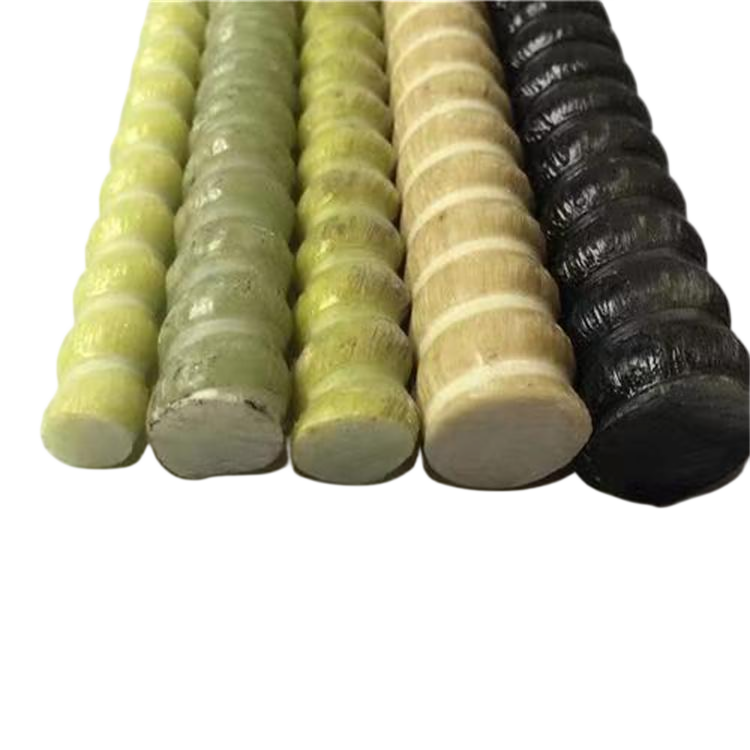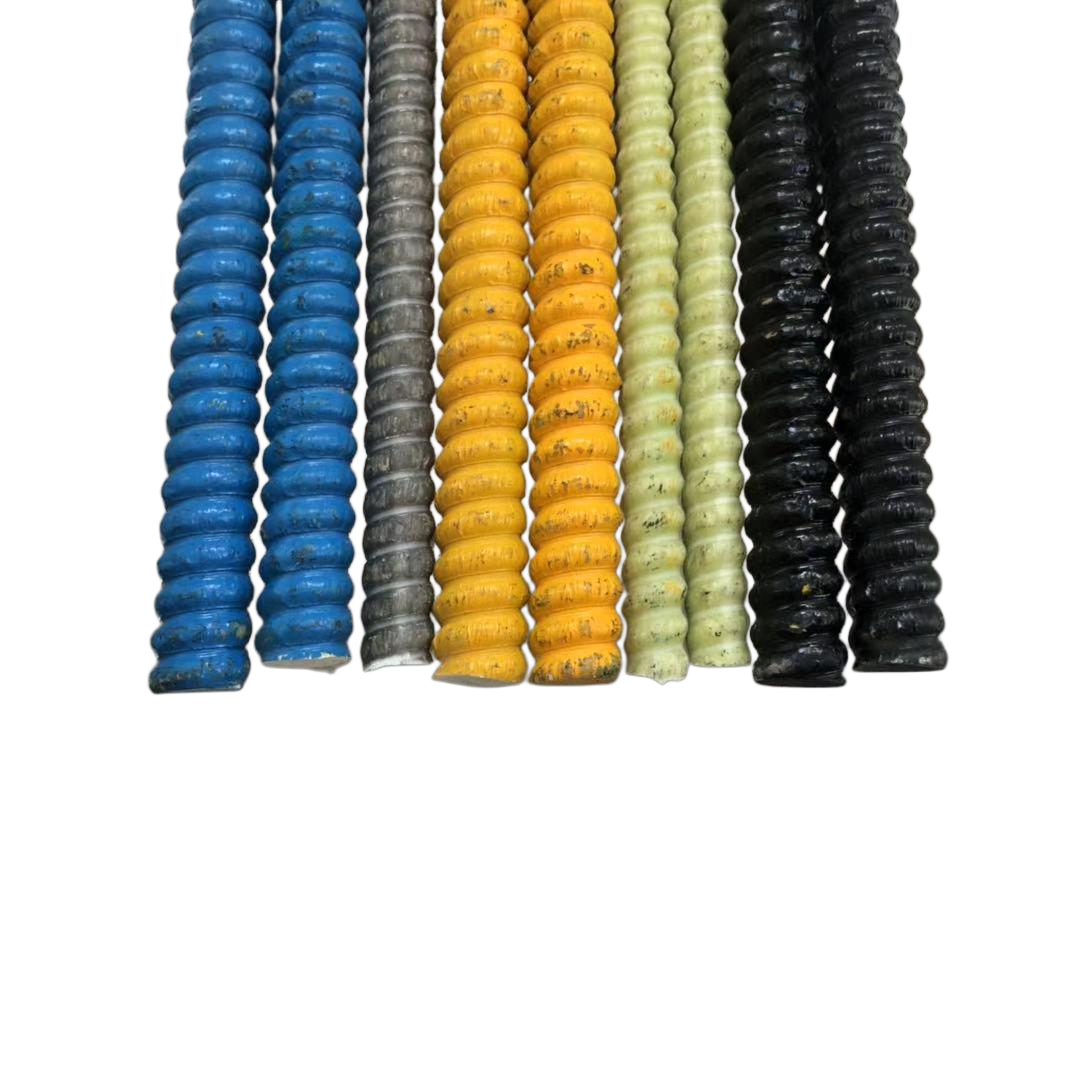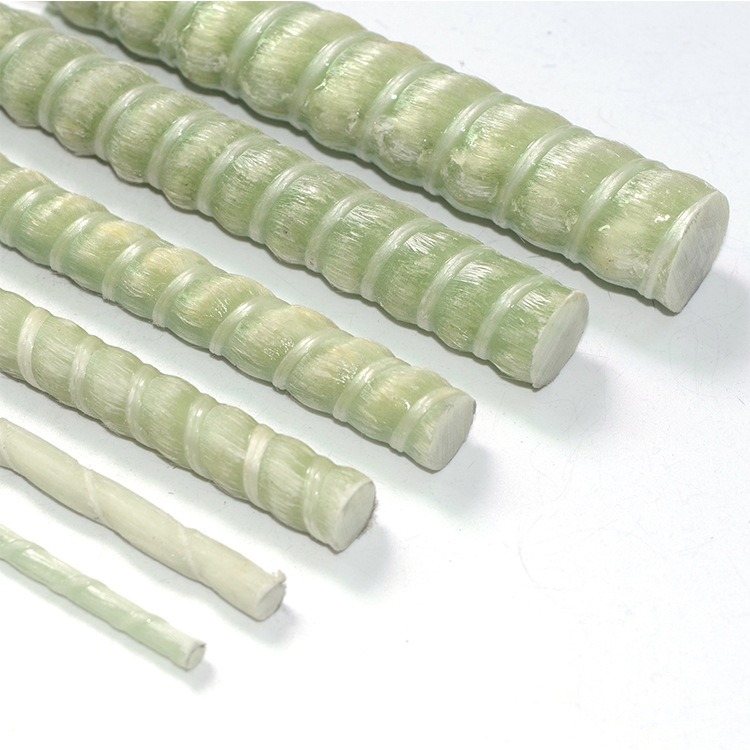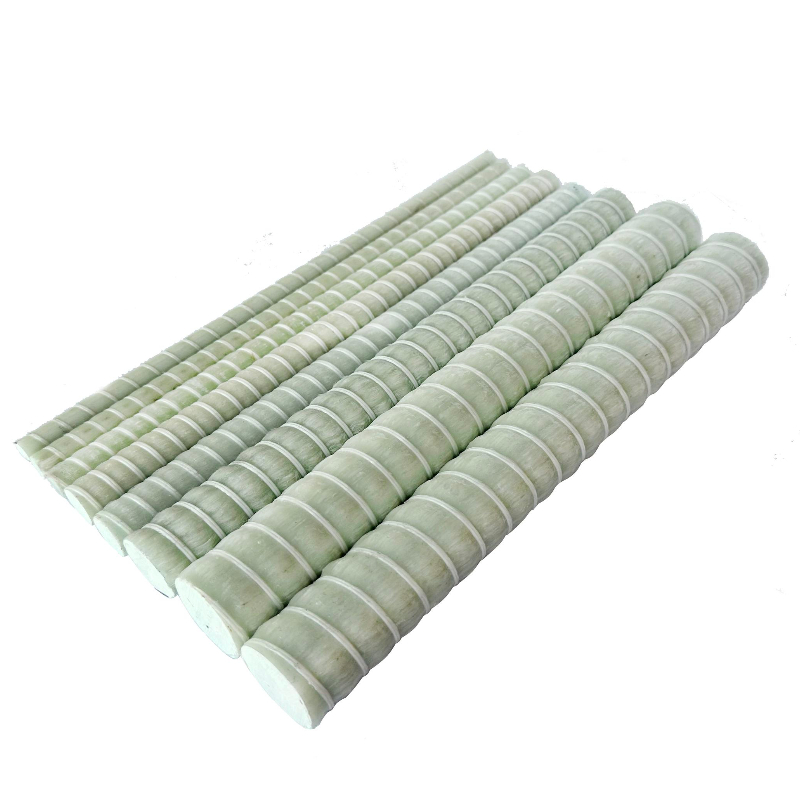Depth analysis of glass fiber reinforced polymer (GFRP) reinforcement
1、 Essence and Characteristics of Materials
GFRP (Glass Fiber Reinforced Polymer Rebar) is a composite material reinforced with glass fiber and resin matrix, produced through extrusion or winding processes. Its core features include:
Lightweight and high-strength
The density is only 1/4 of steel bars (1.5~1.9g/cm ⊃3;), but the tensile strength can reach 2.5~4 times that of HRB400 steel bars (such as GFRP bars with a diameter of 25mm, which have a tensile strength of 1066MPa).
The elastic modulus is about 1/5 of that of steel bars (40GPa), and deformation control needs to be optimized through structural design.
Excellent corrosion resistance
Resistant to chloride ions, acid and alkali, and seawater corrosion, suitable for corrosive environments such as chemical plants and coastal defense projects.
Resistant to carbonization, frost resistance, and extended structural lifespan.
functional diversity
Non magnetic and non-conductive, suitable for special scenarios such as nuclear power plants and medical MRI rooms.
The coefficient of thermal expansion is similar to that of concrete, and the bonding strength is stronger.

2、 Application Fields and Engineering Value
civil engineering
Excavation support: Replace steel cage to avoid the risk of shield tunneling machine breaking and reduce mud and water inrush accidents.
Bridges and tunnels: reduce structural weight, enhance durability, and lower maintenance costs.
marine engineering
Docks and offshore platforms: resistant to seawater corrosion, with a lifespan far exceeding traditional steel.
Chemical Industry and Environmental Protection
Wastewater treatment plants and electrolytic cells: resistant to chemical erosion, ensuring structural safety.
Green Building
Energy conservation and consumption reduction are in line with the trend of low-carbon development.
Restoration of Historical Buildings
Provide structural support without damaging the original appearance.

3、 Advantages and limitations
Advantages and limitations
Corrosion resistance, long lifespan, and high cost (about 2-3 times that of steel bars)
Lightweight, high strength, construction safety, low elastic modulus, requiring special design
Non magnetic/non-conductive connection technology is complex (requiring specialized anchoring devices)
Good thermal stability, insufficient accumulation of long-term performance data

4、 Market and Development Trends
Market Size
It is expected that the global market size will reach 450 million US dollars by 2029, with a compound annual growth rate of 11.5%.
Main producers
Mateenbar, MRG Composites, and others hold approximately 56% of the market share.
Driving factors
Policy support (green buildings, environmentally friendly materials).
Special environmental requirements (marine, chemical).
The urbanization process promotes the upgrading of building safety.
Technology Trends
Develop low-cost production processes.
Optimize performance (such as increasing elastic modulus).

5、 Standards and specifications
international standard
FIB stipulates that the tensile strength of GFRP reinforcement shall be ≥ 1000MPa, and the elastic modulus shall be 40-55GPa.
American Standard
The ACI 440 series requires a design strength reduction factor of 0.5-0.6 and a chemical corrosion resistance test (strength loss ≤ 10%).
Chinese standards
JGJ/T 336-2016 stipulates that the short-term ultimate tensile strength of GFRP reinforcement shall be ≥ 1000MPa, and the thickness of concrete protective layer shall be ≥ 20mm (Class I environment).

6、 Future prospects
With technological advancements and cost optimization, GFRP reinforcement is expected to further expand in the following areas:
Intelligent building: Integrating sensors to achieve structural health monitoring.
Extreme environmental engineering: deep sea, polar and other scenarios.
Circular Economy: Developing recyclable resin matrices to enhance material sustainability.
GFRP reinforcement, with its unique performance advantages, is gradually evolving from a "substitute material" to a "mainstream material", providing safer, more durable, and environmentally friendly solutions for the engineering field.

























